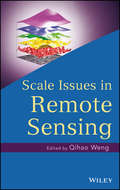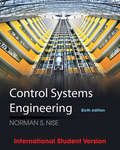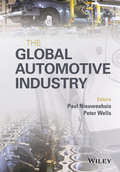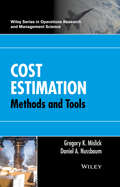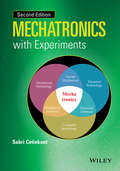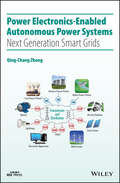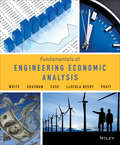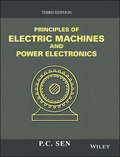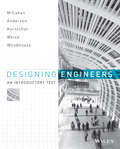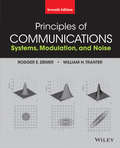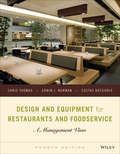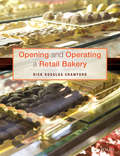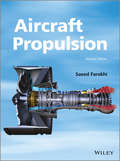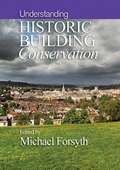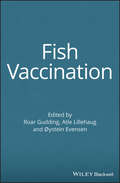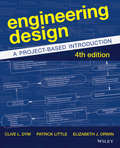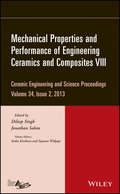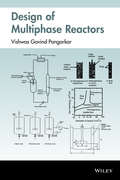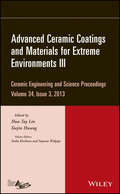- Table View
- List View
Scale Issues in Remote Sensing
by Qihao WengProvides up-to-date developments in the field of remote sensing by assessing scale issues in land surface, properties, patterns, and processes Scale is a fundamental and crucial issue in remote sensing studies and image analysis. GIS and remote sensing scientists use various scaling techniques depending on the types of remotely sensed images and geospatial data used. Scaling techniques affect image analysis such as object identification and change detection. This book offers up-to-date developments, methods, and techniques in the field of GIS and remote sensing and features articles from internationally renowned authorities on three interrelated perspectives of scaling issues: scale in land surface properties, land surface patterns, and land surface processes. It also visits and reexamines the fundamental theories of scale and scaling by well-known experts who have done substantial research on the topics. Edited by a prominent authority in the geographic information science community, Scale Issues in Remote Sensing: Offers an extensive examination of the fundamental theories of scale issues along with current scaling techniques Studies scale issues from three interrelated perspectives: land surface properties, patterns, and processes Addresses the impact of new frontiers in Earth observation technology (high-resolution, hyperspectral, Lidar sensing, and their synergy with existing technologies) and advances in remote sensing imaging science (object-oriented image analysis and data fusion) Prospects emerging and future trends in remote sensing and their relationship with scale Scale Issues in Remote Sensing is ideal as a professional reference for practicing geographic information scientists and remote sensing engineers as well as supplemental reading for graduate level students.
Control Systems Engineering
by Norman S. NiseHighly regarded for its accessible writing and practical case studies, Control Systems Engineering is the most widely adopted textbook for this core course in Mechanical and Electrical engineering programs. This new sixth edition has been revised and updated with 20% new problems and greater emphasis on computer-aided design. In addition, the text is now supported by 10 virtual experiments, which enable students to implement the design-simulate-prototype workflow of practicing engineers. Powered by LabVIEW software and simulations of Quanser's lab plants, the virtual labs enable students to apply concepts to virtual systems, implement control solutions and evaluate their results. The virtual labs deepen the homework learning experience and prepare students to make more effective use of their time in the lab.
The Global Automotive Industry (Automotive Series)
by Paul Nieuwenhuis Peter WellsThe automotive industry is still one of the world's largest manufacturing sectors, but it suffers from being very technology-focused as well as being relatively short-term focused. There is little emphasis within the industry and its consultancy and analyst supply network on the broader social and economic impacts of automobility and of the sector that provides it. The Global Automotive Industry addresses this need and is a first port of call for any academic, official or consultant wanting an overview of the state of the industry. An international team of specialist researchers, both from academia and business, review and analyse the key issues that make vehicle manufacturing still the world’s premier manufacturing sector, closely tied in with the fortunes of both established and newly emerging economies. In doing so, it covers issues related to manufacturing, both established practices as well as new developments; issues relating to distribution, marketing and retail, vehicle technologies and regulatory trends; and, crucially, labour practices and the people who build cars. In all this it explains both how the current situation arose and also likely future trajectories both in terms of social and regulatory trends, as the technological, marketing and labour practice responses to those, leading in many cases to the development of new business models. Key features Provides a global overview of the automotive industry, covering its current state and considering future challenges Contains contributions from international specialists in the automotive sector Presents current research and sets this in an historical and broader industry context Covers threats to the industry, including globalization, economic and environmental sustainability The Global Automotive Industry is a must-have reference for researchers and practitioners in the automotive industry and is an excellent source of information for business schools, governments, and graduate and undergraduate students in automotive engineering.
Cost Estimation: Methods and Tools (Wiley Series in Operations Research and Management Science)
by Gregory K. Mislick Daniel A. NussbaumPresents an accessible approach to the cost estimation tools, concepts, and techniques needed to support analytical and cost decisions Written with an easy-to-understand approach, Cost Estimation: Methods and Tools provides comprehensive coverage of the quantitative techniques needed by professional cost estimators and for those wanting to learn about this vibrant career field. Featuring the underlying mathematical and analytical principles of cost estimation, the book focuses on the tools and methods used to predict the research and development, production, and operating and support costs for successful cost estimation in industrial, business, and manufacturing processes. The book begins with a detailed historical perspective and key terms of the cost estimating field in order to develop the necessary background prior to implementing the presented quantitative methods. The book proceeds to fundamental cost estimation methods utilized in the field of cost estimation, including working with inflation indices, regression analysis, learning curves, analogies, cost factors, and wrap rates. With a step-by-step introduction to the practicality of cost estimation and the available resources for obtaining relevant data, Cost Estimation: Methods and Tools also features: Various cost estimating tools, concepts, and techniques needed to support business decisions Multiple questions at the end of each chapter to help readers obtain a deeper understanding of the discussed methods and techniques An overview of the software used in cost estimation, as well as an introduction to the application of risk and uncertainty analysis A Foreword from Dr. Douglas A. Brook, a professor in the Graduate School of Business and Public Policy at the Naval Postgraduate School, who spent many years working in the Department of Defense acquisition environment Cost Estimation: Methods and Tools is an excellent reference for academics and practitioners in decision science, operations research, operations management, business, and systems and industrial engineering, as well as a useful guide in support of professional cost estimation training and certification courses for practitioners. The book is also appropriate for graduate-level courses in operations research, operations management, engineering economics, and manufacturing and/or production processes.
The Global Automotive Industry (Automotive Series)
by Paul Nieuwenhuis Peter WellsThe automotive industry is still one of the world's largest manufacturing sectors, but it suffers from being very technology-focused as well as being relatively short-term focused. There is little emphasis within the industry and its consultancy and analyst supply network on the broader social and economic impacts of automobility and of the sector that provides it. The Global Automotive Industry addresses this need and is a first port of call for any academic, official or consultant wanting an overview of the state of the industry. An international team of specialist researchers, both from academia and business, review and analyse the key issues that make vehicle manufacturing still the world’s premier manufacturing sector, closely tied in with the fortunes of both established and newly emerging economies. In doing so, it covers issues related to manufacturing, both established practices as well as new developments; issues relating to distribution, marketing and retail, vehicle technologies and regulatory trends; and, crucially, labour practices and the people who build cars. In all this it explains both how the current situation arose and also likely future trajectories both in terms of social and regulatory trends, as the technological, marketing and labour practice responses to those, leading in many cases to the development of new business models. Key features Provides a global overview of the automotive industry, covering its current state and considering future challenges Contains contributions from international specialists in the automotive sector Presents current research and sets this in an historical and broader industry context Covers threats to the industry, including globalization, economic and environmental sustainability The Global Automotive Industry is a must-have reference for researchers and practitioners in the automotive industry and is an excellent source of information for business schools, governments, and graduate and undergraduate students in automotive engineering.
Mechatronics with Experiments
by Sabri CetinkuntComprehensively covers the fundamental scientific principles and technologies that are used in the design of modern computer-controlled machines and processes. Covers embedded microcontroller based design of machines Includes MATLAB®/Simulink®-based embedded control software development Considers electrohydraulic motion control systems, with extensive applications in construction equipment industry Discusses electric motion control, servo systems, and coordinated multi-axis automated motion control for factory automation applications Accompanied by a website hosting a solution manual
Mechatronics with Experiments
by Sabri CetinkuntComprehensively covers the fundamental scientific principles and technologies that are used in the design of modern computer-controlled machines and processes. Covers embedded microcontroller based design of machines Includes MATLAB®/Simulink®-based embedded control software development Considers electrohydraulic motion control systems, with extensive applications in construction equipment industry Discusses electric motion control, servo systems, and coordinated multi-axis automated motion control for factory automation applications Accompanied by a website hosting a solution manual
Power Electronics-Enabled Autonomous Power Systems: Next Generation Smart Grids (Wiley - IEEE)
by Qing-Chang ZhongPower systems worldwide are going through a paradigm shift from centralized generation to distributed generation. This book presents the SYNDEM (i.e., synchronized and democratized) grid architecture and its technical routes to harmonize the integration of renewable energy sources, electric vehicles, storage systems, and flexible loads, with the synchronization mechanism of synchronous machines, to enable autonomous operation of power systems, and to promote energy freedom. This is a game changer for the grid. It is the sort of breakthrough — like the touch screen in smart phones — that helps to push an industry from one era to the next, as reported by Keith Schneider, a New York Times correspondent since 1982. This book contains an introductory chapter and additional 24 chapters in five parts: Theoretical Framework, First-Generation VSM (virtual synchronous machines), Second-Generation VSM, Third-Generation VSM, and Case Studies. Most of the chapters include experimental results. As the first book of its kind for power electronics-enabled autonomous power systems, it • introduces a holistic architecture applicable to both large and small power systems, including aircraft power systems, ship power systems, microgrids, and supergrids • provides latest research to address the unprecedented challenges faced by power systems and to enhance grid stability, reliability, security, resiliency, and sustainability • demonstrates how future power systems achieve harmonious interaction, prevent local faults from cascading into wide-area blackouts, and operate autonomously with minimized cyber-attacks • highlights the significance of the SYNDEM concept for power systems and beyond Power Electronics-Enabled Autonomous Power Systems is an excellent book for researchers, engineers, and students involved in energy and power systems, electrical and control engineering, and power electronics. The SYNDEM theoretical framework chapter is also suitable for policy makers, legislators, entrepreneurs, commissioners of utility commissions, energy and environmental agency staff, utility personnel, investors, consultants, and attorneys.
Power Electronics-Enabled Autonomous Power Systems: Next Generation Smart Grids (Wiley - IEEE)
by Qing-Chang ZhongPower systems worldwide are going through a paradigm shift from centralized generation to distributed generation. This book presents the SYNDEM (i.e., synchronized and democratized) grid architecture and its technical routes to harmonize the integration of renewable energy sources, electric vehicles, storage systems, and flexible loads, with the synchronization mechanism of synchronous machines, to enable autonomous operation of power systems, and to promote energy freedom. This is a game changer for the grid. It is the sort of breakthrough — like the touch screen in smart phones — that helps to push an industry from one era to the next, as reported by Keith Schneider, a New York Times correspondent since 1982. This book contains an introductory chapter and additional 24 chapters in five parts: Theoretical Framework, First-Generation VSM (virtual synchronous machines), Second-Generation VSM, Third-Generation VSM, and Case Studies. Most of the chapters include experimental results. As the first book of its kind for power electronics-enabled autonomous power systems, it • introduces a holistic architecture applicable to both large and small power systems, including aircraft power systems, ship power systems, microgrids, and supergrids • provides latest research to address the unprecedented challenges faced by power systems and to enhance grid stability, reliability, security, resiliency, and sustainability • demonstrates how future power systems achieve harmonious interaction, prevent local faults from cascading into wide-area blackouts, and operate autonomously with minimized cyber-attacks • highlights the significance of the SYNDEM concept for power systems and beyond Power Electronics-Enabled Autonomous Power Systems is an excellent book for researchers, engineers, and students involved in energy and power systems, electrical and control engineering, and power electronics. The SYNDEM theoretical framework chapter is also suitable for policy makers, legislators, entrepreneurs, commissioners of utility commissions, energy and environmental agency staff, utility personnel, investors, consultants, and attorneys.
Fundamentals of Engineering Economic Analysis
by John A. White Kellie S. Grasman Kenneth E. Case Kim LaScola Needy David B. PrattFundamentals of Engineering Economic Analysis, 1st edition provides streamlined topical coverage with a modern and pedagogically-rich presentation. This text features a wealth of real-world vignettes to reinforce how students will use economics in their future careers as well as to drive student motivation and interest. An enlightening approach combined with strong digital offerings make the course manageable, equipping students with the knowledge they need as future engineers.
Principles of Electric Machines and Power Electronics
by P. C. SenPrinciples of Electric Machines and Power Electronics, Third Edition combines the traditional areas of electric machinery with the latest in modern control and power electronics. Multi-machine systems, brushless motors, and switched reluctance motors are covered, as well as constant flux and constant current operation of induction motors. Additional material is included on new solid state devices such as Insulated Gate Bipolar Transistors and MOS-Controlled Thyristors.
Designing Engineers: An Introductory Text
by Susan McCahan Phil Anderson Mark Kortschot Peter E. Weiss Kimberly A. WoodhouseDesigning Engineers First Edition is written in short modules, where each module is built around a specific learning outcome and is cross-referenced to the other modules that should be read as pre-requisites, and could be read in tandem with or following that module. The book begins with a brief orientation to the design process, followed by coverage of the design process in a series of short modules. The rest of the book contains a set of modules organized in several major categories: Communication & Critical Thinking, Teamwork & Project Management, and Design for Specific Factors (e.g. environmental, human factors, intellectual property). A resource section provides brief reference material on economics, failure and risk, probability and statistics, principles & problem solving, and estimation.
Principles of Communications
by Rodger E. Ziemer William H. TranterKeeping up to date with the most current technologies in the field is essential for all effective electrical and computer engineers. The updated 7th edition of Principles of Communications presents the reader with more in-chapter examples, providing for a more supportive framework for learning. Readers are exposed to digital data transmission techniques earlier in the book, so they can appreciate the characteristics of digital communication systems prior to learning about probability and stochastic processes. They will also find expanded forward error correction code examples, and additional MATLAB problems.
Design and Equipment for Restaurants and Foodservice: A Management View
by Chris Thomas Edwin J. Norman Costas KatsigrisThis text shows the reader how to plan and develop a restaurant or foodservice space. Topics covered include concept design, equipment identification and procurement, design principles, space allocation, electricity and energy management, environmental concerns, safety and sanitation, and considerations for purchasing small equipment, tableware, and table linens. This book is comprehensive in nature and focuses on the whole facility—with more attention to the equipment—rather than emphasizing either front of the house or back of the house.
Opening and Operating a Retail Bakery
by Rick Douglas Crawford CMBOpening and Operating a Retail Bakery is a resource that is "Right Here, Right Now" by someone who has been in the Industry for decades and is still in it today. The benefit for readers that have been looking for a way to learn what seems to have been a secret for the last 40 years, is gaining the skills required to successfully open their own bakery. Crawford templates the proven steps needed to open a bakery, along with keys to operate it that work in the marketplace. The text provides tools, advice, coaching, and best practices that are based on the author's experience and being used now in the over 85 companies and 500+ retail locations that he currently supports. The application of information in the book will be supported through a student project. This project is the beginning of taking concepts from the book and turning them in to something that readers can execute on to meet the goal of opening and operating a successful bakeshop.
Aircraft Propulsion
by Saeed FarokhiNew edition of the successful textbook updated to include new material on UAVs, design guidelines in aircraft engine component systems and additional end of chapter problems Aircraft Propulsion, Second Edition follows the successful first edition textbook with comprehensive treatment of the subjects in airbreathing propulsion, from the basic principles to more advanced treatments in engine components and system integration. This new edition has been extensively updated to include a number of new and important topics. A chapter is now included on General Aviation and Uninhabited Aerial Vehicle (UAV) Propulsion Systems that includes a discussion on electric and hybrid propulsion. Propeller theory is added to the presentation of turboprop engines. A new section in cycle analysis treats Ultra-High Bypass (UHB) and Geared Turbofan engines. New material on drop-in biofuels and design for sustainability is added to refl ect the FAA’s 2025 Vision. In addition, the design guidelines in aircraft engine components are expanded to make the book user friendly for engine designers. Extensive review material and derivations are included to help the reader navigate through the subject with ease. Key features: General Aviation and UAV Propulsion Systems are presented in a new chapter Discusses Ultra-High Bypass and Geared Turbofan engines Presents alternative drop-in jet fuels Expands on engine components' design guidelines The end-of-chapter problem sets have been increased by nearly 50% and solutions are available on a companion website Presents a new section on engine performance testing and instrumentation Includes a new 10-Minute Quiz appendix (with 45 quizzes) that can be used as a continuous assessment and improvement tool in teaching/learning propulsion principles and concepts Includes a new appendix on Rules of Thumb and Trends in aircraft propulsion Aircraft Propulsion, Second Edition is a must-have textbook for graduate and undergraduate students, and is also an excellent source of information for researchers and practitioners in the aerospace and power industry.
Aircraft Propulsion
by Saeed FarokhiNew edition of the successful textbook updated to include new material on UAVs, design guidelines in aircraft engine component systems and additional end of chapter problems Aircraft Propulsion, Second Edition follows the successful first edition textbook with comprehensive treatment of the subjects in airbreathing propulsion, from the basic principles to more advanced treatments in engine components and system integration. This new edition has been extensively updated to include a number of new and important topics. A chapter is now included on General Aviation and Uninhabited Aerial Vehicle (UAV) Propulsion Systems that includes a discussion on electric and hybrid propulsion. Propeller theory is added to the presentation of turboprop engines. A new section in cycle analysis treats Ultra-High Bypass (UHB) and Geared Turbofan engines. New material on drop-in biofuels and design for sustainability is added to refl ect the FAA’s 2025 Vision. In addition, the design guidelines in aircraft engine components are expanded to make the book user friendly for engine designers. Extensive review material and derivations are included to help the reader navigate through the subject with ease. Key features: General Aviation and UAV Propulsion Systems are presented in a new chapter Discusses Ultra-High Bypass and Geared Turbofan engines Presents alternative drop-in jet fuels Expands on engine components' design guidelines The end-of-chapter problem sets have been increased by nearly 50% and solutions are available on a companion website Presents a new section on engine performance testing and instrumentation Includes a new 10-Minute Quiz appendix (with 45 quizzes) that can be used as a continuous assessment and improvement tool in teaching/learning propulsion principles and concepts Includes a new appendix on Rules of Thumb and Trends in aircraft propulsion Aircraft Propulsion, Second Edition is a must-have textbook for graduate and undergraduate students, and is also an excellent source of information for researchers and practitioners in the aerospace and power industry.
Understanding Historic Building Conservation (Historic Building Conservation)
by Michael ForsythThis book is the first in a series of volumes that combine conservation philosophy in the built environment with knowledge of traditional materials, and structural and constructional conservation techniques and technology: • Understanding Historic Building Conservation • Materials & Skills in Historic Building Conservation • Structures & Construction in Historic Building Conservation The series aims to introduce each aspect of conservation and to provide concise, basic and up-to-date knowledge for architects, surveyors and engineers as well as for commissioning client bodies, managers and advisors. In each book, Michael Forsyth draws together chapters by leading architects, structural engineers and related professionals to reflect the interdisciplinary nature of conservation work. The books are structured to be of direct practical application, taking the reader through the process of historic building conservation and emphasising throughout the integrative teamwork involved. This present volume – Understanding Historic Building Conservation – discusses conservation philosophy and the importance of understanding the history of a building before making strategic decisions. It details the role of each conservation team member and sets out the challenges of conservation at planning level in urban, industrial and rural contexts and in the conservation of designed landscapes. The framework of legislation and charters within which these operate is described and the book also provides guidance on writing conservation plans, explains the fundamental issues of costing and contracts for conservation and highlights the importance of maintenance. Eighteen chapters written by the experts present today’s key issues in historic building conservation: Timothy Cantell, Martin Cherry, Nigel Dann, Peter Davenport, Geoff Evans, Keith Falconer, Colin Johns, Jeremy Lake, Jonathan Lovie, Duncan McCallum, James Maitland Gard’ner, Martin Robertson, Adrian Stenning, David H. Tomback, Giles Waterfield, Philip Whitbourn, John Winter.
Fish Vaccination
by Roar Gudding Atle Lillehaug Oystein EvensenFish farming, in seawater and in freshwater, in cages, tanks or ponds, makes an ever-increasing and significant contribution to the production of aquatic food in many regions of the world. During the last few decades there has been significant progress and expansion in the aquaculture sector, characterized by intensified production and the exploitation of many new species. Aquaculture must be a sustainable bio-production, environmentally as well as economically. Disease prevention in order to reduce losses, and the use of antimicrobials is crucial in this perspective. Vaccination has, in a few years, become the most important method for disease prevention in aquaculture, and effective prophylaxis based on stimulation of the immune system of the fish is essential for further development of the industry. This book provides general information about disease prevention in fish by vaccination, as well as specific descriptions of the correct use of vaccines against the most important bacterial and viral infectious diseases of aquatic animals. The book is written by some of the world’s leading experts in the subject, drawn from many countries where aquaculture is a significant and expanding part of the economy. Fish Vaccination is an encyclopedia of fish vaccinology for every present and future aquaculturist. Professionals in the aquaculture sector, including fish veterinarians and fish biologists, within the industry, in scientific institutions and regulatory authorities will all find a huge wealth of commercially important knowledge within this book. Libraries in all universities where aquaculture, biological and veterinary sciences are studied and taught should have copies of this important book on their shelves.
Fish Vaccination
by Roar Gudding Atle Lillehaug Øystein EvensenFish farming, in seawater and in freshwater, in cages, tanks or ponds, makes an ever-increasing and significant contribution to the production of aquatic food in many regions of the world. During the last few decades there has been significant progress and expansion in the aquaculture sector, characterized by intensified production and the exploitation of many new species. Aquaculture must be a sustainable bio-production, environmentally as well as economically. Disease prevention in order to reduce losses, and the use of antimicrobials is crucial in this perspective. Vaccination has, in a few years, become the most important method for disease prevention in aquaculture, and effective prophylaxis based on stimulation of the immune system of the fish is essential for further development of the industry. This book provides general information about disease prevention in fish by vaccination, as well as specific descriptions of the correct use of vaccines against the most important bacterial and viral infectious diseases of aquatic animals. The book is written by some of the world’s leading experts in the subject, drawn from many countries where aquaculture is a significant and expanding part of the economy. Fish Vaccination is an encyclopedia of fish vaccinology for every present and future aquaculturist. Professionals in the aquaculture sector, including fish veterinarians and fish biologists, within the industry, in scientific institutions and regulatory authorities will all find a huge wealth of commercially important knowledge within this book. Libraries in all universities where aquaculture, biological and veterinary sciences are studied and taught should have copies of this important book on their shelves.
Engineering Design: A Project-Based Introduction
by Clive L. DymDym, Little and Orwin's Engineering Design: A Project-Based Introduction, 4th Edition gets students actively involved with conceptual design methods and project management tools. The book helps students acquire design skills as they experience the activity of design by doing design projects. It is equally suitable for use in project-based first-year courses, formal engineering design courses, and capstone project courses.
Mechanical Properties and Performance of Engineering Ceramics and Composites VIII (Ceramic Engineering and Science Proceedings #580)
by Soshu Kirihara Sujanto WidjajaCeramic Engineering and Science Proceedings Volume 34, Issue 2 - Mechanical Properties and Performance of Engineering Ceramics and Composites VIII A collection of 21 papers from The American Ceramic Society’s 37th International Conference on Advanced Ceramics and Composites, held in Daytona Beach, Florida, January 27-February 1, 2013. This issue includes papers presented in Symposium 1 -Mechanical Behavior and Performance of Ceramics and Composites.
Mechanical Properties and Performance of Engineering Ceramics and Composites VIII: Ceramic Engineering And Science Proceedings, Volume 34 Issue 2 (Ceramic Engineering and Science Proceedings #580)
by Soshu Kirihara Sujanto WidjajaCeramic Engineering and Science Proceedings Volume 34, Issue 2 - Mechanical Properties and Performance of Engineering Ceramics and Composites VIII A collection of 21 papers from The American Ceramic Society’s 37th International Conference on Advanced Ceramics and Composites, held in Daytona Beach, Florida, January 27-February 1, 2013. This issue includes papers presented in Symposium 1 -Mechanical Behavior and Performance of Ceramics and Composites.
Design of Multiphase Reactors
by Vishwas G. PangarkarDetails simple design methods for multiphase reactors in the chemical process industries Includes basic aspects of transport in multiphase reactors and the importance of relatively reliable and simple procedures for predicting mass transfer parameters Details of design and scale up aspects of several important types of multiphase reactors Examples illustrated through design methodologies presenting different reactors for reactions that are industrially important Includes simple spreadsheet packages rather than complex algorithms / programs or computational aid
Advanced Ceramic Coatings and Materials for Extreme Environments III: Ceramic Engineering And Science Proceedings (Ceramic Engineering and Science Proceedings #581)
by Soshu Kirihara Sujanto WidjajaCeramic Engineering and Science Proceedings Volume 34, Issue 3 - Advanced Ceramic Coatings and Materials for Extreme Environments III A collection of 12 papers from The American Ceramic Society’s 37th International Conference on Advanced Ceramics and Composites, held in Daytona Beach, Florida, January 27-February 1, 2013. This issue includes papers presented in the Advanced Ceramic Coatings and Systems and Next Generation Technologies for Innovative Surface Coatingssymposia.
